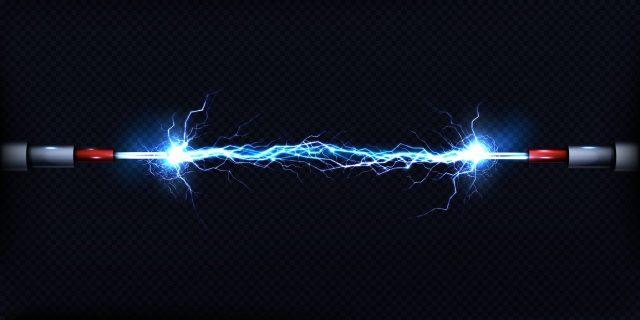- Introduction to Electronics for Hobbyists
Post Stastics
- This post has 937 words.
- Estimated read time is 4.46 minute(s).
Today, we will switch gears and begin a series of posts on basic electronics for beginners. I have been an electronics hobbyist since I was nine years old when I got my first crystal set kit for Christmas. I still remember how excited I was when I got it built and heard my local AM radio stations. I owe a great deal of gratitude to my father, who I am sure was the one who purchased the kit for me. He also climbed up on the roof of our home to string an antenna wire from one end of our house to the other.
Electronics is one of the most fascinating and rewarding hobbies you can undertake. As an electronics hobbyist, you'll discover how the devices that power our modern world work, and you'll even be able to build your own projects from scratch. Whether it's as simple as lighting up an LED or as complex as designing your own circuits, this series will guide you through the basics of electronics, giving you the knowledge and skills to turn your ideas into reality.
This introductory post will give you a solid foundation on the basics of electricity, which is the core of all electronic circuits. We'll cover what electricity is, how it works, and key concepts such as voltage, current, and resistance. Future articles will delve into specific components like resistors, capacitors, inductors, transistors, and more, each accompanied by hands-on experiments to reinforce your learning.
What is Electricity?
At its simplest, electricity is the movement of electrons through a conductor. Electrons are negatively charged particles that orbit the nucleus of an atom. When electrons flow in a controlled way, we get an electrical current. This movement is what powers everything from the smallest light bulb to the most powerful supercomputers.
To understand how electricity works, we need to introduce a few key terms: voltage, current, and resistance.
Voltage: The Force Behind Electricity
Voltage, often referred to as "electric potential," is the force that pushes electrons through a circuit. It can be thought of as the "pressure" that causes electric current to flow. The higher the voltage, the stronger the push. Voltage is measured in volts (V).
Example: Imagine a garden hose. The water pressure inside the hose is like voltage. The higher the pressure, the more forcefully the water flows out when you open the nozzle.
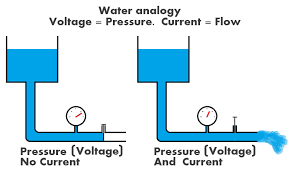
Current: The Flow of Electric Charge
Current is the actual flow of electrons through a conductor (such as a wire). It is measured in amperes (A), commonly referred to as "amps." When voltage pushes electrons, a current is the result. Think of it as the amount of water flowing through the hose.
There are two types of electric current:
- Direct Current (DC): Electrons flow in one direction. This is the type of current provided by batteries.
- Alternating Current (AC): Electrons change direction periodically. This is the type of current supplied to your home by the power grid.
Example: In our hose analogy, the current is the water flowing through the hose when you open the nozzle.
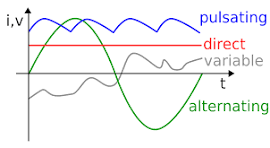
Resistance: The Opposition to Current Flow
Resistance is a measure of how much a material opposes the flow of electric current. Some materials, like metals, have low resistance and allow electricity to flow easily. Others, like rubber, have high resistance and block current. Resistance is measured in ohms (Ω).
Example: In the garden hose analogy, resistance is like a kink in the hose. The more kinks or blockages, the harder it is for water (current) to flow.
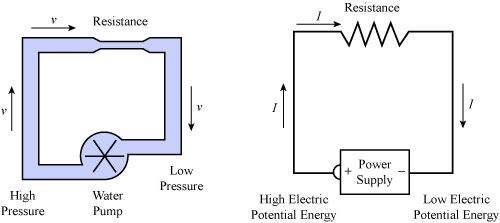
Ohm’s Law: The Relationship Between Voltage, Current, and Resistance
These three concepts—voltage, current, and resistance—are closely related. Ohm's Law is a simple equation that explains how they interact:
[
V = I \times R
]
Where:
- ( V ) is voltage (in volts),
- ( I ) is current (in amperes),
- ( R ) is resistance (in ohms).
This formula allows you to calculate any one of these values if you know the other two. It's a fundamental equation that will help you design and understand circuits as you progress in this series.
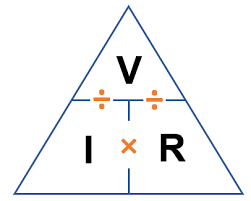
How Electricity Flows in a Circuit
In a basic circuit, electrons flow from a power source, such as a battery, through conductors (wires) and components like resistors, LEDs, or motors. The power source has a positive terminal (high potential) and a negative terminal (low potential). Electrons move from the negative terminal to the positive terminal, completing the circuit.
For electricity to flow, the circuit must be closed, meaning there is an unbroken path for the current to travel. If the path is interrupted—such as by a switch being turned off—the circuit is open, and current cannot flow.
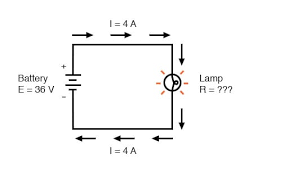
Safety First!
As an electronics hobbyist, it's important to always prioritize safety. Even simple circuits can be dangerous if mishandled. Here are a few basic safety tips:
- Always disconnect power before working on a circuit.
- Avoid working with high voltages until you have more experience.
- Use proper tools designed for working with electronics (e.g., insulated pliers and screwdrivers).
- Wear safety glasses when working with components that could pop, like capacitors.
Conclusion
In this introduction, you've learned the basics of electricity, including voltage, current, and resistance, as well as how they relate to one another through Ohm's Law. With this foundation, you'll be ready to dive deeper into specific electronic components in future posts, starting with resistors in the next article. We'll also get hands-on with simple experiments to help reinforce your understanding.
Stay tuned as we continue our journey into the exciting world of electronics!
What’s Next
In our next post, we will look at resistors, the devices used in circuits to add resistance.
